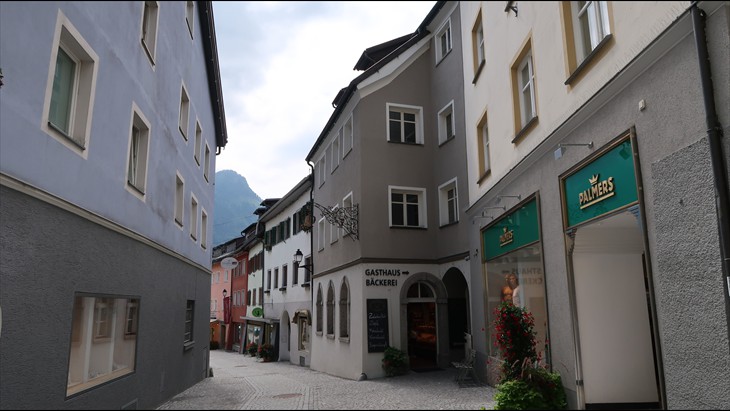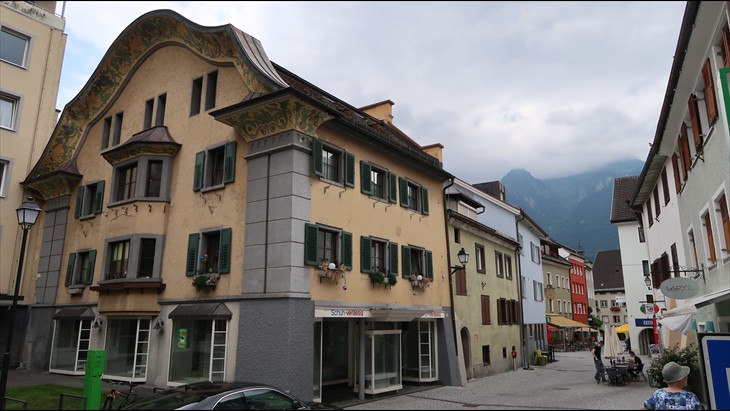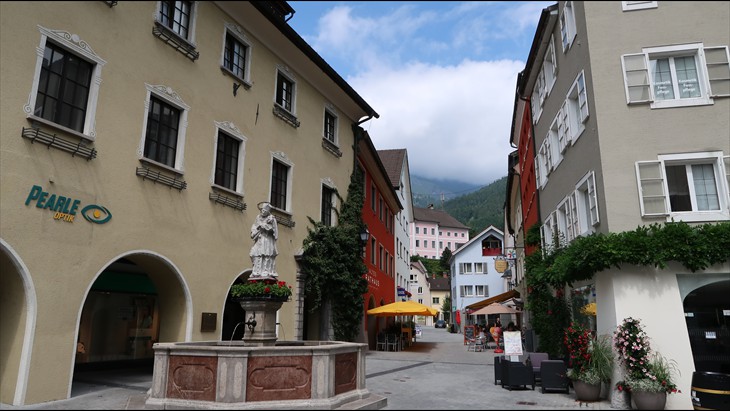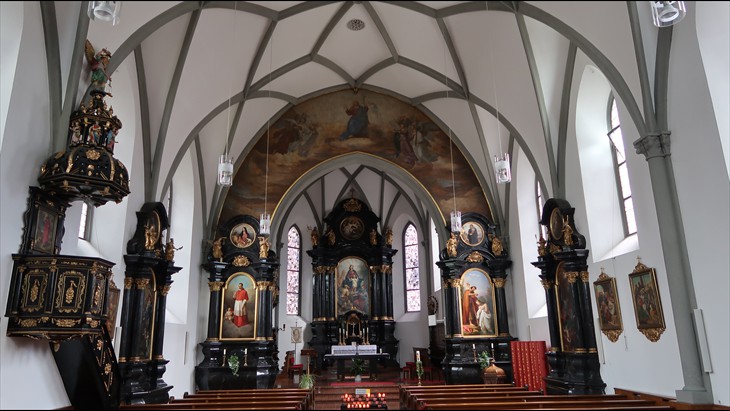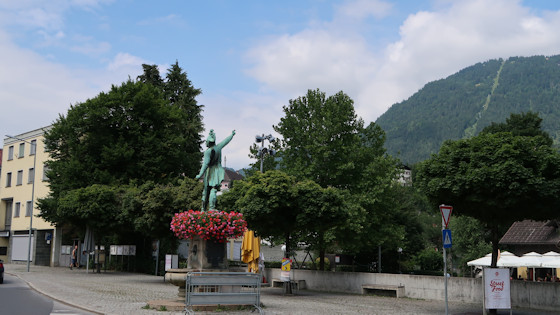
Just before the entrance to the old town of Bludenz, Captain Riedmiller welcomes us with his sabre (during the war years 1796 and 1799 he led a Bludenz rifle company as a captain in the defensive battles against the French under Napoleon).
On the right you can see the route of the Muttersberg cable car. The officially signposted Way of St. James leads out of Bludenz and past this place - an insane diversion. It is better to walk along the Alte Landstrasse directly to Nüziders to the church!
In the alleys of the old town there are houses more than 300 years old. Worth seeing are the old gates to the city, parts of the city wall and the Laurentius Church.
The centre of Bludenz's old town is the Nepomuk Fountain. In the tradition of the great Italian cities, this fountain was built here in front of the town hall at the beginning of the 18th century. St. Nepomuk is considered here above all as the patron saint against slander and suspicion.
High above the old town, the St. Laurentius Church with its striking onion tower, together with the baroque Gayenhofen Palace, is the town's landmark visible from afar.
The Counts of Werdenberg built a castle here between 1222 and 1245. This meant that Bludenz was also a fortified town in Vorarlberg in the Middle Ages, alongside Bregenz and Feldkirch. From this castle the Gayenhofen Palace (by Giovanni Gaspare Bagnato) was built between 1745 and 1752. Today it serves as an official building for the district administration of Bludenz.
The St. Laurentius Church was first mentioned in 842. 100 years later (in 940), King Otto I donated the church of Bludenz to the Bishop of Chur as compensation for damage suffered. The simple single-aisle Gothic nave building dates back to 1514. The high altar made of black marble was built in 1720, and only later was the altarpiece of Mary with Child, St. Andrew and St. Lawrence created.
The bell tower was built between 1667 and 1670 according to the plans of the Feldkirch Jesuit Father Maximilian von Lerchenfeld. Above the square base tower, which has four Gospel busts at the top corners, there is a three-storey octagonal tower with round arch openings and an onion dome.

